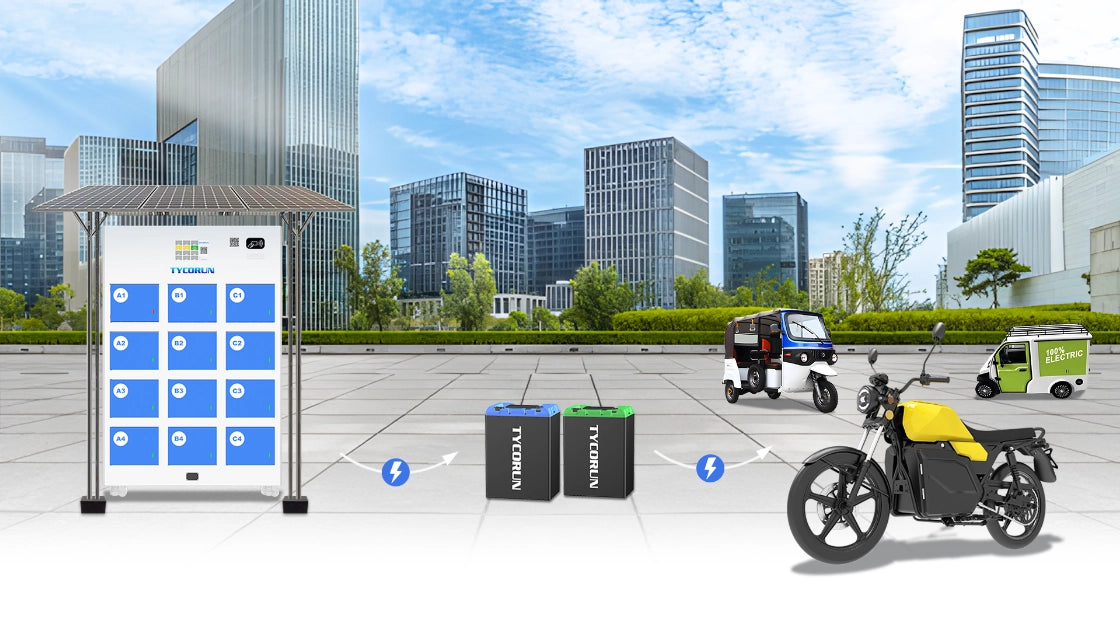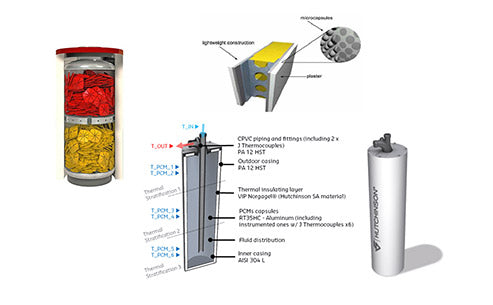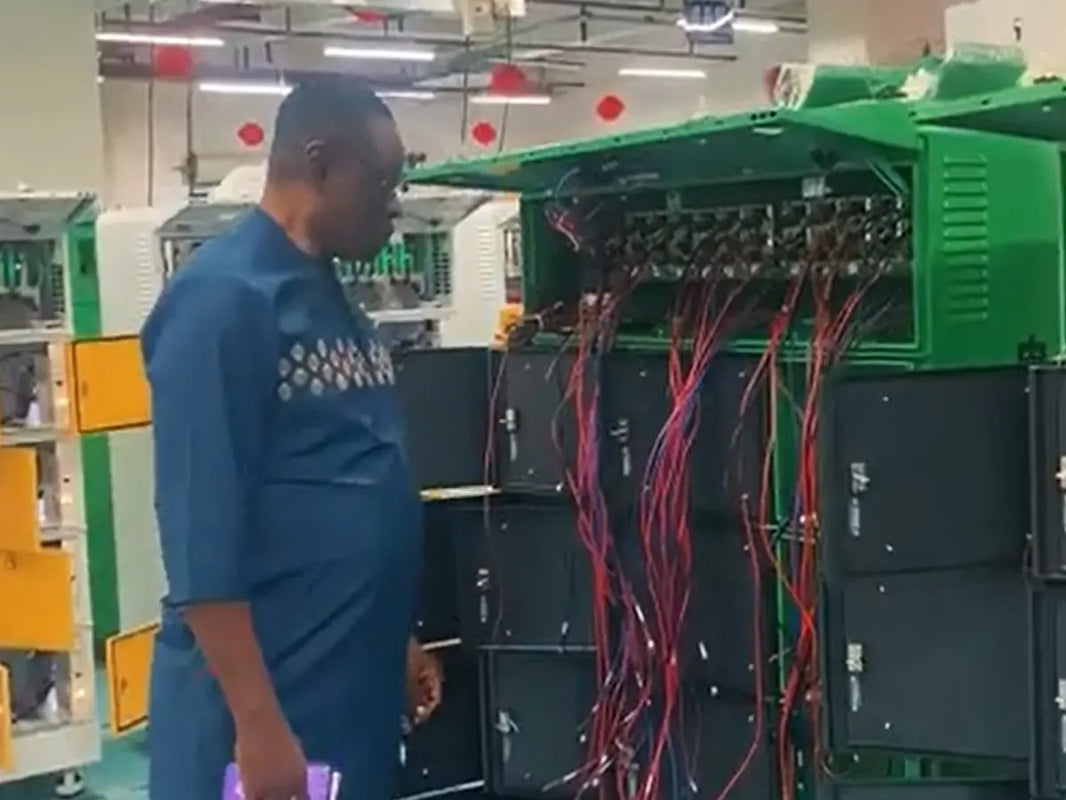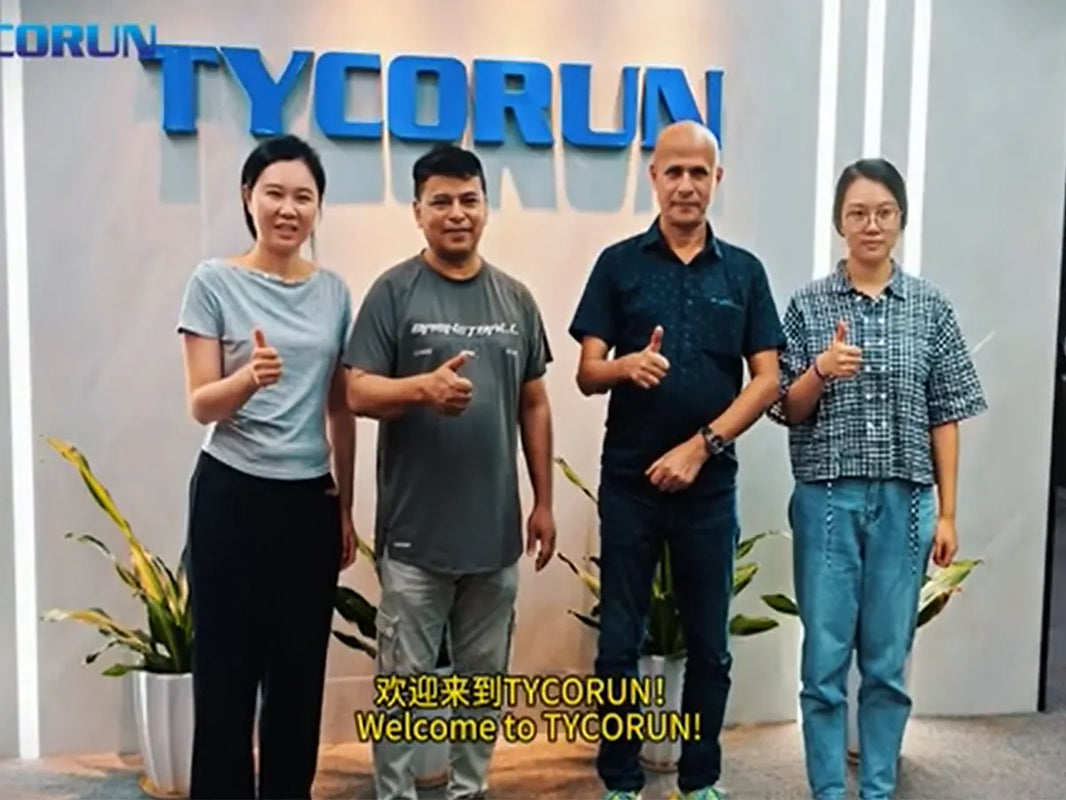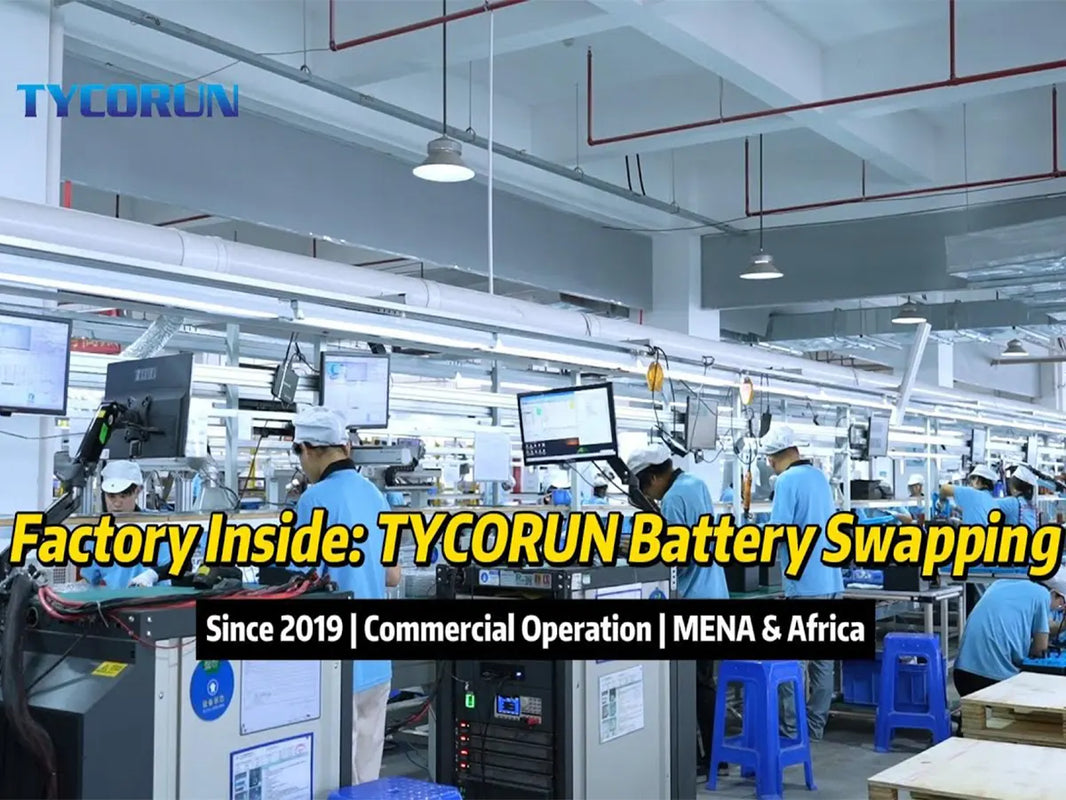
main content:
PCM(phase change materials) has a good heat dissipation effect in the thermal management system of power batteries, but most of the PCMs currently used are solid-liquid phase transitions. After the solid-state PCM turns into a liquid state, it is easy to leak, and it is easy to cause corrosion to components such as batteries, causing serious safety hazards and a series of problems. Therefore, in order to solve the problem of leakage of PCM into liquid state after phase transition, many researchers encapsulate PCM.
PCM capsule is a material in which PCM is enclosed by polymer wall shell or micro container, and its structure is mainly composed of wall material and core material. Encapsulation technology realizes the solidification of PCM, which makes PCM more convenient in use, storage and transportation. According to the different particle sizes of PCM, it can be divided into the following categories: PCM nanocapsules, PCM microcapsules and PCM macrocapsules (those with a particle size of less than 1 μm are called nanocapsules; those with a particle size of 1 to 1000 μm are called microcapsules; those with a particle size larger than 1mm are called macrocapsules).
PCM microcapsule wall materials are mainly divided into two categories: organic wall materials and inorganic wall materials. At present, the wall materials of PCM microcapsules are mostly made of organic polymer materials, and there are many related studies. At the same time, its preparation method is relatively mature, but the thermal conductivity of organic polymer materials is generally poor, so that the thermal conductivity of PCM is reduced.
1. Preparation of PCM micro/nanocapsules

The preparation methods of PCM micro/nanocapsules mainly include physical method, chemical method and physical-chemical method. The physical method is to use equipment to uniformly mix the core material and the wall material by mechanical means, refine and granulate, and then condense and solidify the wall material on the surface of the core material to prepare PCM microcapsules. The methods of physical preparation of PCM microcapsules include air suspension method, spray method, vacuum coating method and electrostatic bonding method. The chemical method mainly uses the polymerization of small monomers to generate polymer materials to coat the core material. The commonly used methods include interfacial polymerization and in-situ polymerization. At present, the most commonly used methods for preparing PCM microcapsules are interfacial polymerization, emulsion polymerization, in-situ polymerization and suspension polymerization.
Interfacial polymerization is a common method for preparing PCM microcapsules. The method uses appropriate emulsifiers to prepare oil/water emulsion or water/emulsion, emulsifying or dispersing the core material in the emulsion, and then form PCM microcapsules on the surface of the core material through monomer polymerization, and finally separate the PCM microcapsules from the water phase or the oil phase. The process of preparing PCM nanocapsules by interfacial polymerization is different from that of preparing PCM microcapsules. When preparing PCM nanocapsules, a thin needle syringe with capillary tube should be used, and the needle should be very close to the liquid surface, and a high-voltage direct current should be applied between the needle and the interface, so that PCM nanocapsules can be prepared. Lan Xiaozheng et al. prepared n-eicosane as the core material by interfacial polymerization. For the PCM microcapsules with polyurea as the wall material, the diameter of the hollow PCM microcapsules is about 0.2 μm, the diameter of the PCM microcapsules containing n-eicosane is 2~6 μm, and the covering rate of n-eicosane is 65%~80%. Zhang Xuejing et al. used n-octadecane as the core material and polyurea as the wall material to prepare PCM nanocapsules by the mini-emulsion interfacial polymerization method., and copolymerized styrene and cross-linking agent divinylbenzene on the inner surface to form double-walled PCM nanocapsules. The research results show that the average particle size of the obtained PCM nanocapsules is 0.41 μm after phacoemulsification for 5 minutes, the particle size distribution is uniform, and the content of the capsule core is as high as 50%.
Emulsion polymerization is also a commonly used method for the preparation of PCM micro/nanocapsules. It mainly refers to the effect of emulsifier, under the condition of mechanical stirring or vigorous shaking, the monomer is uniformly dispersed in the reaction medium to form an emulsion and polymerized, so as to coat the core material. According to the different emulsifiers, monomers and dispersion media used, it can be divided into normal phase emulsion and reverse phase emulsion. If the core material is oily, normal phase emulsion polymerization should be used, and if the core material is water-soluble, inverse emulsion polymerization should be used. Ma et al. used paraffin as the core material and polymethyl methacrylate (PMMA) as the wall material, and prepared PCM microcapsules by UV-induced emulsion polymerization. The specific steps are: first, the monomer methyl methacrylate (MMA), paraffin and emulsifier are dissolved in an organic solvent, the photoinitiator is dissolved in water, and then mixed at 45℃, and stirred at 600r·min-1 for 30min to form an O/W emulsion; then, after stirring at 10000r·min-1 for 3min, the rotation speed was reduced to 600r·min-1, and then irradiated with ultraviolet light for 30min, and finally PMMA/paraffin microcapsules were prepared. The PCM microcapsules are round, with a particle size ranging from 0.5 to 2 μm. The proportion of paraffin in the PCM microcapsules is 61.2%. Alkan et al. prepared PCM microcapsules by emulsion polymerization with n-eicosane as the core material and PMMA as the wall material. The specific steps are: firstly dissolving n-eicosane and surfactant in deionized water, then heating to n-eicosane to melt, then adding MMA, cross-linking agent allyl methacrylate and FeSO4·7H2O solution, and then stirred at 2000r·min-1 for 30min, and finally added the water-soluble initiator tert-butyl hydroperoxide and Na2S2O7 solid and heated it to 90℃ for 1h. The research results show that the average particle size of the PCM microcapsules is 0.7μm at the speed of 2000r·min-1, the core material coverage is 35%, the melting temperature is 35.2℃, the phase change enthalpy is 84.2J·g-1, the curing temperature is 34.9℃, and the phase change enthalpy is 87.5J·g-1.
In situ polymerization refers to the process of encapsulation, the reaction monomer and catalyst are all outside the core material, the monomer is dissolved in the continuous phase of the microcapsule system, and the polymer is insoluble in the whole system, so the polymerization reaction occurs on the surface of the core material. As the polymerization progresses, the size of the prepolymer gradually increases and is deposited on the surface of the core material. Due to the continuous progress of cross-linking and polymerization, a solid capsule shell is finally formed on the surface of the core material, and the resulting polymer film can completely cover the surface of the core material. Zhang et al. prepared PCM microcapsules with n-octadecane as the core material and meloxamine formaldehyde as the wall material by in-situ polymerization. The particle size of the microcapsules ranges from 0.2 to 5.6 μm, and the mass fraction of n-octadecane in the PCM microcapsules is 65% to 78%. The thermal stability of PCM capsules is also different when the ratio of urine/meloxamine/formaldehyde used is different. When the ratio of adrenal/meloxamine/formaldehyde is 0.2:0.8:0.3, the maximum thermal stability temperature of PCM capsules is 160℃. If 8.8% cyclohexane is added on this basis, the thermal stability temperature can be increased by 37℃. Palanikkumaran et al. prepared PCM microcapsules with n-octadecane as the core material and melamine resin as the wall material by in-situ polymerization. The content of n-octadecane in the prepared PCM microcapsules is higher than 70%, the phase change enthalpy is also higher than 160J·g-1, and the thermal stability temperature of the capsules is as high as 100℃, and coated it on the fiber to prepare a heat storage and temperature regulation fiber with a phase change enthalpy higher than 100 J·g-1. Although PCM microcapsules have developed rapidly in recent years, due to their relatively large particle size, the viscosity of the fluid increases after long-term use, and the capsule wall is easily ruptured, which limits its application in some fields, nanocapsules with smaller particle size began to attract the attention of researchers. Nanocapsules were first proposed by Narty in 1970 and are widely used in fuels and spices.
Suspension polymerization is a new method for preparing microcapsules. During the preparation process, the polymer monomer is dissolved in the organic phase, and is continuously precipitated from the organic phase with the progress of the polymerization reaction, deposited on the surface of the organic droplets, and finally forms microcapsules. Huang Quanguo et al. prepared PCM microcapsules with paraffin as the core material and polystyrene as the wall material by a quasi-suspension polymerization method, and carried out related thermal performance tests and structural characterizations. The research results show that when the paraffin content in the PCM microcapsules is 20%~50%, the protection effect on the core material is better, the heat transfer ability is also improved compared with the paraffin wax, and the microcapsules show a good spherical shape. However, pores of uneven size are formed on the surface of the microcapsules, and the particle size distribution of the spheres is relatively large. When the paraffin content in the PCM microcapsules was 60%, the morphology of the microcapsules became irregular, the voids became larger, and the shell even broke. Sanchez et al. used a suspension polymerization method to coat several PCMs with different polarities with polystyrene as the wall material, and the prepared PCM microcapsules had a particle size distribution of 200-500 μm, the phase change enthalpy is up to 120J·g-1; and it is also found that polystyrene cannot coat hydrophilic polyethylene glycol, but the coating effect of non-polar n-alkane PCM is very good.
The complex coacervation method, also known as the phase separation method, refers to two or more polymer materials with opposite charges as the raw materials to form the wall material, and then disperse the core material such as PCM in the wall material solution, and make electrostatic interaction between the oppositely charged polymers under appropriate temperature or pH conditions, so that the solubility is reduced and phase separation occurs, and microcapsules are formed on the surface of core materials such as PCM. Xing Lin et al. used n-tetradecane as the core material, gelatin and gum arabic as the wall material, and prepared three kinds of PCM microcapsules with different wall material and core material ratio by complex coacervation method, and applied them in air conditioning cold storage materials. The research results show that the thermal performance of the prepared PCM microcapsules A is more in line with the requirements of air conditioning cold storage than the other two. The phase change enthalpy during solidification is 189.2J·g-1, the phase change enthalpy during melting is 191.9J·g-1, the size is 1~20μm, and the encapsulation effect is good. Basal et al. used n-eicosane as the core material, chitosan and silk fibroin as raw materials, and prepared PCM microcapsules by complex coagulation method. The particle size is 8~38μm, and the capsule wall is a unique structure with double layers, the average mass fraction of eicosine is 45.7%, the phase change enthalpy during solidification is 89.68J·g-1, and the phase change enthalpy during melting is 93.04J·g-1.
Spray drying method, the core material is first dispersed in a pre-liquefied wall material solution to form a suspension or emulsion, and it is transported to an atomizer with spray drying function, and the dispersion will be atomized in the high-temperature airflow, and quickly evaporate the solvent that dissolves the wall material in the droplets, so that the wall material is solidified, and finally the core material is microencapsulated. Hawlader et al. prepared PCM microcapsules by spray drying method with gelatin and gum arabic aqueous solution as wall material and paraffin as core material. The preparation process is to add the melted paraffin into the gelatin solution, emulsify at a rate of 10000r·min-1, maintain the temperature at 65℃, add aqueous gum arabic solution during the emulsifying process, and reduce the pH of the solution to 4; Then spray drying in spray drying equipment, adjust the rotational speed of the centrifugal spray head to 25000r·min-1, and maintain the inlet and outlet temperatures at 130℃ and 80℃ to prepare PCM microcapsules. The phase transition enthalpies of the three different proportions of the prepared core material and wall material are all 145 J·g-1, and the particle size of the microcapsules is relatively uniform.
2. Enhanced heat transfer of PCM microcapsules

Thermal conductivity is one of the important parameters of energy storage and heat transfer media such as PCM microcapsules. The better the thermal conductivity, the higher the energy storage efficiency, and vice versa. However, the thermal conductivity of PCM microcapsules is generally low, and the PCM suspension also decreases with the increase of the mass concentration of PCM microcapsules. For example, Zhang et al. and Liu Li et al. studied the effect of different mass concentrations of PCM microcapsules on the thermal conductivity of suspensions. The results show that the thermal conductivity of PCM microcapsule suspension decreases with the increase of the mass concentration of PCM microcapsules.
In order to improve the heat transfer efficiency of PCM microcapsules or their heat transfer fluids, many researchers add high thermal conductivity nanoparticles to the fluid, which greatly improves the heat transfer performance of PCM microcapsule fluids. In order to solve the problem of poor heat transfer performance of PCM microcapsules, Wang et al. added TiO2 to the suspension as an enhanced heat transfer material. The results of the study show that when PCM microcapsules are added to the thermal fluid, although the heat storage capacity is improved, but its thermal conductivity is reduced, adding 0.5% TiO2 to the thermal fluid with PCM microcapsule content of 5% to 20%, the heat transfer rate is significantly improved. Wang Liang et al. used numerical methods to study the effects of the number, particle size and thermal conductivity of nanoparticles on the thermal fluid Nusselt number Nu. The results show that the heat transfer Nu between the PCM microcapsules and the fluid increases with the increase of the number, particle size and thermal conductivity of the adsorbed nanoparticles., and can improve the phase transition rate of PCM microcapsules and shorten the time required for phase transition.
After adding high thermal conductivity nanoparticles to the PCM microcapsule suspension, a part of the nanoparticles was adsorbed on the surface of the PCM microcapsule particles, and the other part was suspended in the base liquid. This has a certain effect on the thermal conductivity of Nu between the PCM microcapsule particles and the surrounding fluid and the fluid, and finally improves the thermal conductivity of the PCM microcapsule suspension.

